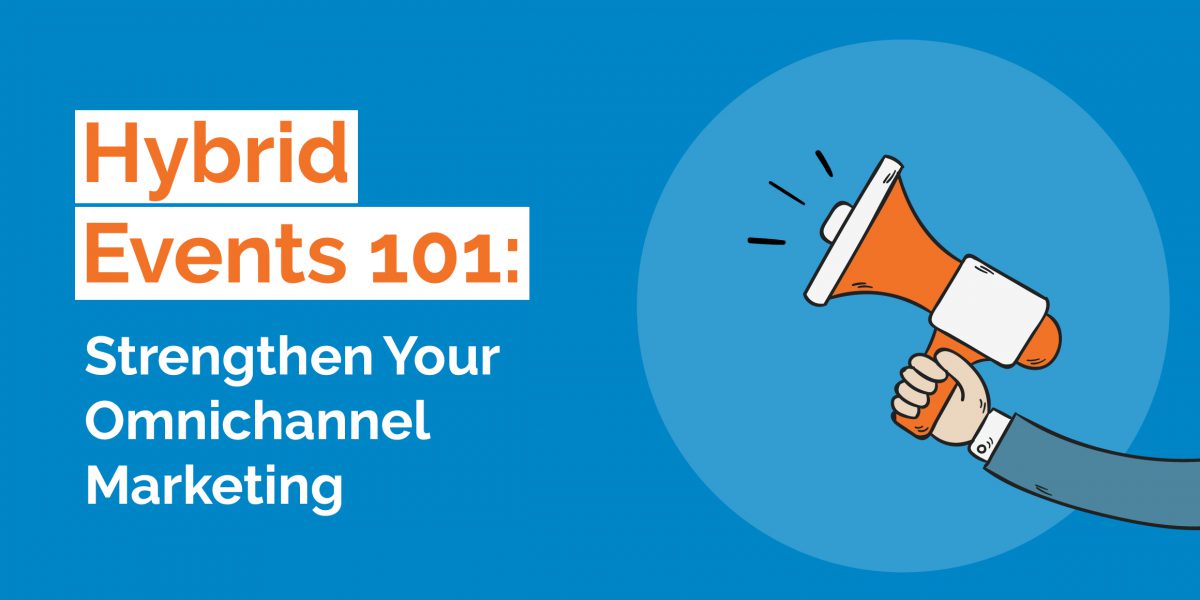Hybrid events take place both online and offline simultaneously, allowing guests to attend either virtually or in person. For example, if your nonprofit holds a hybrid auction, some guests can view a livestream and bid on items online from the comfort of their homes. Those attending in person can socialize, view the physical items, and participate in a live auction.
While these events allow your nonprofit to get the benefits of both virtual and in-person formats, they can present challenges when it comes to marketing. How do you effectively reach and engage both virtual and in-person attendees within one campaign?
Leveraging multiple channels at once, such as direct mail, influencer marketing, and email, can help you reach your target audience both on and offline. In this guide, we’ll cover the four steps you can follow to effectively engage potential attendees:
- Identify the communication channels you’ll use.
- Invest in the right tools and resources.
- Integrate communication channels.
- Analyze the results.
The most important first step to an omnichannel marketing campaign is choosing the right communication channels. Because it can be time-consuming and require more resources to use multiple channels, you’ll need to be sure that you select those that will guarantee the highest ROI. Let’s get started by exploring how to select these channels.
Step 1: Identify the communication channels you’ll use.
Because choosing the right channels is so important to the success of your campaign (and your event), here are a few tips you can follow to identify the platforms your audience engages with:
- Get to know your audience. If your nonprofit is experienced when it comes to marketing, you might already have an idea of what your audience’s communication preferences are. For example, maybe responses to web ads are lukewarm but you have above-average click-through rates for your email campaigns. Maybe you also know that your social media engagement is exceptional. From here, you’ll know to allocate most of your time and resources toward email and social media.
- Balance digital and traditional channels. Because you are promoting a hybrid event, aim to use both online and offline channels to target virtual and in-person attendees. Offline channels that are accessible to nonprofits include direct mail, print media (e.g., ads in your local newspaper), community outreach at other local events, word of mouth, and phone campaigns. Keep in mind that you may need to use special tactics to make these methods more effective. Pursuant’s guide to direct mail fundraising recommends leveraging strategies like emotional storytelling, impactful visual elements, and URLs or QR codes for multimedia online content in your print marketing.
- Consider your donors’ journey. In the digital age, and particularly during multichannel or omnichannel campaigns, supporters can follow any number of unique, personalized paths to your event. Do your best to map out a few of these paths to determine how you will guide them from Point A (their first touchpoint with your nonprofit) to Point B (registering for your event). No matter what channel they are interacting with, each touchpoint should take them one step closer to registration than the last.
After you’ve selected the communication channels you’ll use, brainstorm ways you can use them to achieve your campaign’s goals. Then, make sure these strategies are incorporated into the creative elements of your campaign.
Step 2: Invest in the right tools and resources.
Next, you’ll need to elaborate on the tools and software your nonprofit will need in your marketing plan. Depending on your event and communication methods, you may need tools and resources such as:
- A text-to-give tool you can use before and during the event. If you hold a hybrid auction, for example, you might ask participants to sign up for text alerts after registering to get sneak peeks of the auction items. Then during the auction, participants can use the text tool to bid on items, make donations, and receive outbid notifications.
- Social media marketing software to help you manage multiple platforms. Often, these tools allow you to build a calendar of scheduled posts. This way, you won’t need to manually publish posts across several different platforms throughout the week.
- Help from a marketing agency that can advise you on the best ways to align with your audience’s preferences, leverage your existing resources, and guide supporters down the path to registering and/or donating.
The right tools will make the campaign much easier for your nonprofit, eliminating many of the pesky logistical details you’d have to contend with by doing it all on your own. Then, you can spend more time focused on strategizing and personalizing donor outreach.
Step 3: Integrate communication channels.
If you hold an event like a hybrid auction, you wouldn’t want your in-person and virtual attendees to feel totally disconnected. The same should be true for your on and offline marketing efforts.
Make an effort to weave both communication formats together. You might add a QR code to your direct mail that links to your virtual registration page, the event page with more details, or a blog post discussing the upcoming event. Similarly, you could create a Google Ad that leads to a landing page where users can register for the event and sign up to receive direct mail in the future.
This strategy will not only ensure that no user falls through any gaps in your omnichannel strategy, but will also help establish more touchpoints with supports that you can leverage in future campaigns.
Step 4: Analyze the results.
Once your event passes, you’ll need to analyze your marketing data to determine how successful the omnichannel campaign was. Keep in mind that the metrics you’ll need to reference will vary depending on the channels you use and your objectives for the event.
Remember to analyze typical fundraising metrics, such as total revenue, number of donations you receive, average gift amount, number of attendees, etc. to understand the overall success of the event. To determine your marketing campaign’s efficacy and ROI, here are the key engagement metrics to check for each communication channel:
- Email: Analyze open rate, click-through rate, conversions, and unsubscribe rate.
- Direct mail: Examine response rate, conversions, cost per acquisition, and follow-up engagement.
- Text and phone: Evaluate response rate, conversions, follow-up requests or appointments made to speak with your staff, and opt-out rates.
- Newspaper or magazine ads: Analyze event website traffic following the publication of the ad.
- Social media: Evaluate engagement such as likes and comments, click-through rate, follower growth, and event hashtag use (if applicable).
With this data, you’ll be able to more accurately understand your supporters’ likes and dislikes and tailor future campaigns to their preferences. For events, Swaim Strategies’ guide to event planning recommends sending out surveys to get direct feedback from supporters about how to make your future events better.
Hybrid events can help you engage more of your supporters regardless of geographical boundaries. Make sure you are effectively reaching any supporter who is interested in your event by using a well-rounded mix of communication platforms, ranging from phone calls to social media posts to flyers in local businesses.
With all of these platforms working together, you’ll extend your reach and build a seamless supporter experience with your marketing campaigns.





worktime
This article is great because it lays out a four-step plan to engage your audience online and offline during hybrid events. It’s a valuable resource for marketers and event planners, offering clear, practical steps for success in the hybrid events space. Thanks, Jennifer.